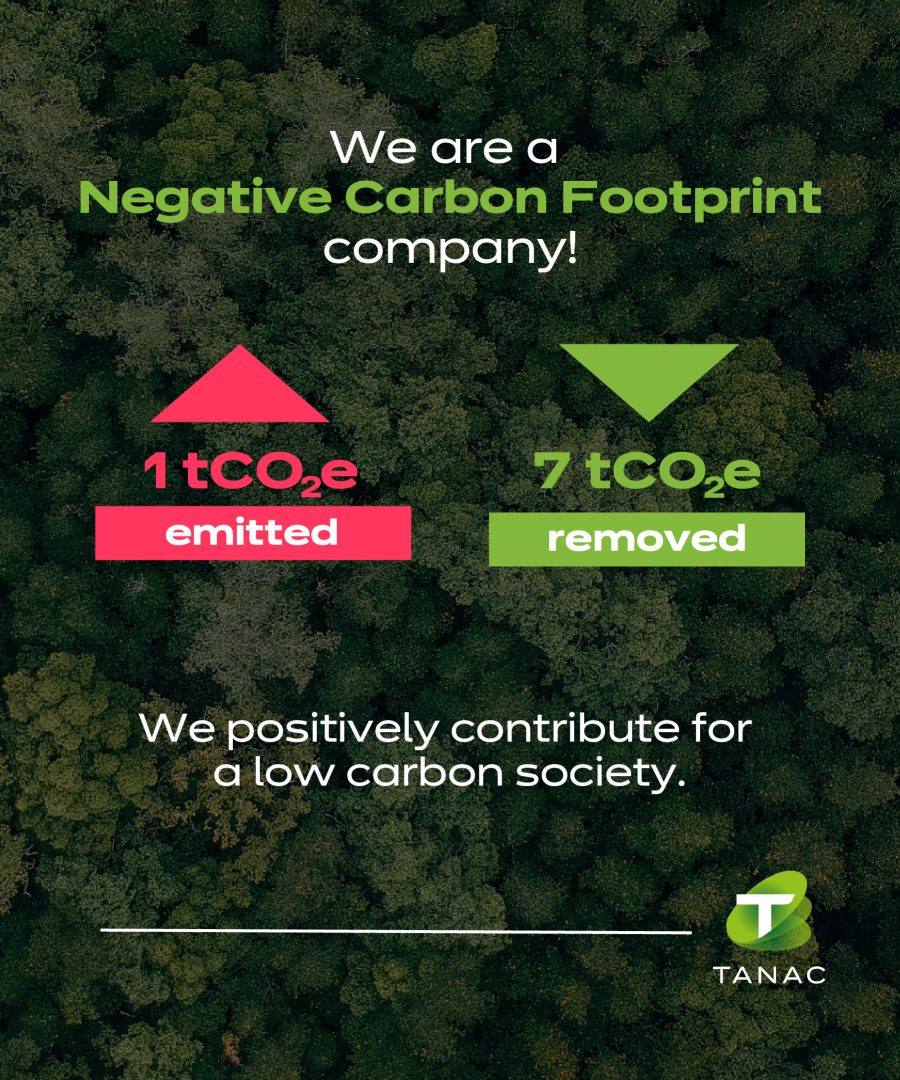Due to the expansion of Black Wattle planting in its Forest Units and Fostering Program, Tanac increased the removal of greenhouse gases
Tanac has just been verified by Bureau Veritas Certification as a negative carbon company. After inventory analysis, using the specifications of NBR ISO 14064-1 and the Brazilian GHG Protocol Program, it was concluded that for every 1 tCO2e emitted, the company removed 7 tCO2e in its forests. This means that Tanac removes seven times more CO2 from the atmosphere than it emits in the whole operation, analyzing the three scopes that involve the entire production chain. The number represents an increase over the same period before when the company sequestered 6.03 tCO2. The result is mainly due to the increase in the planting of Black Wattle in its Forest Units and Forest Fomenting Program – since the trees contribute to the purification of the air – in addition to several measures to reduce CO2 emissions in our production units.
The Greenhouse Gas (GHG) Emissions Inventory was verified by a third party. That is: in addition to accounting for direct emissions from sources that belong to or are controlled by the company (such as mobile combustion, stationary combustion, solid waste and effluents, industrial processes, fugitives, and agricultural activities), the Scope 2 indirect emissions (which accounts for GHG emissions from the generation of electricity acquired and consumed by the company) and Scope 3 emissions (as a result of activities performed by third-party companies, such as purchased goods and services, transportation, business travel, waste treatment, and emissions from suppliers) are also analyzed.
The CO2 emissions is one of the main subject of the global agenda and brings challenges, mainly, to the climate. The theme is part of Tanac’s ESG Agenda and reinforces the company’s commitment to sustainability – not only of its own activities, but of the entire chain involved. In this way, Tanac contributes effectively in the construction of a low carbon society.
The own reforestation activities and the development of Tanac’s forestry business are a valuable asset to society, for the current and future generations, acting in a positive way in issues such as: the mitigation of climate changes, the conservation of biodiversity, water resources and pollination.
BLACK WATTLE AND ITS ROLE FOR THE PRESERVATION OF THE ENVIRONMENT
Black Wattle is recognized for its ability to colonize degraded areas, being an effective tree in controlling erosion and improving soil fertility. One of the most important points of its cultivation is the ability to perform the symbiotic association for the fixation of atmospheric nitrogen.
The use of the species in agroforestry systems can be pointed out as another positive aspect of the cultivation of the species. In Rio Grande do Sul, plantations associated with livestock and agricultural crops between the lines of the forest planting, since the first year, are frequently adopted. Black Wattle wood is used to produce pulp, charcoal, wood panels and energy generation (firewood for internal consumption and pellets for export). Part of the state’s energy matrix is supplied by wattle biomass because of its high calorific value and low ash content. Woodchips are exported to the Asian market for pulp production. From the tannin extracted from the bark, several products for the tanning of skins and other derivatives used in the sugar and oil & gas industry,cosmetics, food industry, and treatment of water and industrial effluents are produced.
PARTNERSHIP WITH BANCO DO BRASIL SHOULD PROMOTE THE CULTIVATION OF BLACK WATTLE IN RIO GRANDE DO SUL
Recently, Tanac has partnered with Banco do Brasil to promote the planting and forest management of Black Acacia in the state, allowing the increase of its forest base. The agreement offers a range of financing options to rural producers, so that they can afford the Agricultural Costs and Investment, aiming at increasing the planting of Black Wattle forests in the State, in return for the guarantee of purchase of this forest production by Tanac.. Read more.
BRAZILIAN GHG PROTOCOL PROGRAM
The Brazilian GHG Protocol Program is an initiative of FGVces (Getúlio Vargas Foundation’s Center for Sustainability Studies) to register and publish Greenhouse Gas (GHG) Emissions Inventories, through a platform for Public Emissions Registry. Its goal is to encourage companies and governments to understand, quantify and manage their GHG emissions, through a methodology developed in the US in 1998, which eventually became the most used method for this purpose, worldwide.


